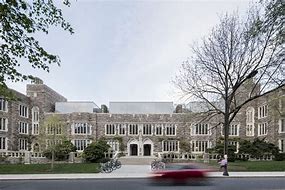The Massachusetts Institute of Technology (MIT) is one of the most renowned educational institutions in the world, distinguished by its commitment to innovation, scientific inquiry, and technological advancement. Located in Cambridge, Massachusetts, MIT has been at the forefront of shaping the future of science, engineering, business, and the arts for over 150 years. The university is a symbol of excellence in education, known for producing groundbreaking research,Innovative Excellence: Massachusetts Institute of Technology (MIT) – Leading the Future of Education, Technology, and Research developing revolutionary technologies, and fostering a culture of entrepreneurship and intellectual curiosity.
This article delves into the history, academic offerings, research initiatives, and campus life at MIT, exploring the factors that make it a global leader in higher education and innovation. Through its emphasis on interdisciplinary collaboration and practical problem-solving, MIT has become a hub for transformative ideas and solutions that address the world’s most pressing challenges.
A Rich Legacy: The Origins of MIT
MIT was founded in 1861 by William Barton Rogers, a scientist and educator, in response to the growing need for a new type of educational institution that could integrate science and engineering with the industrial practices of the time. Rogers’ vision was to create a university that emphasized practical education, preparing students for careers in the rapidly expanding fields of science and technology. From its inception, MIT focused on hands-on learning, with a curriculum designed to encourage innovation and research-based problem solving.
The early years of MIT were marked by the establishment of a rigorous curriculum that combined theoretical knowledge with practical application. The university quickly became known for its focus on technical education, particularly in the fields of mechanical engineering, civil engineering, and chemistry. Over time, MIT expanded its academic offerings to include a wide range of disciplines, from physics and biology to economics and the humanities, all while maintaining its core focus on technological and scientific advancement.
Academic Excellence: Rigorous Programs and Interdisciplinary Collaboration
MIT is widely recognized for its rigorous academic programs and its commitment to fostering an environment where interdisciplinary collaboration is encouraged. The university offers undergraduate and graduate programs across a variety of disciplines, each designed to challenge students intellectually and equip them with the skills needed to become leaders in their respective fields.
Undergraduate Programs: A Holistic Approach to Education
MIT’s undergraduate program is designed to provide students with a well-rounded education that emphasizes both the theoretical and practical aspects of learning. Students are required to take a broad range of courses across different fields, including the humanities, social sciences, natural sciences, and engineering. This interdisciplinary approach allows students to make connections between different areas of study and gain a deeper understanding of the complex world around them.
One of the most distinctive features of MIT’s undergraduate program is its emphasis on hands-on learning. The MIT Undergraduate Research Opportunities Program (UROP) is one of the largest research programs of its kind in the world, giving students the opportunity to collaborate with faculty on cutting-edge research projects. This program fosters a culture of intellectual curiosity and allows students to apply what they learn in the classroom to real-world problems.
MIT also offers a range of specialized undergraduate programs in fields such as electrical engineering, computer science, mechanical engineering, biology, and economics. Students can pursue dual degrees or minors in a variety of disciplines, allowing them to customize their education to suit their interests and career goals. This flexibility is one of the reasons why MIT is consistently ranked among the best universities in the world.
Graduate Programs: Advancing Knowledge and Innovation
MIT’s graduate programs are renowned for their depth and breadth, providing students with the opportunity to specialize in areas ranging from artificial intelligence and robotics to economics and architecture. The university’s graduate schools include the School of Engineering, the School of Science, the School of Architecture and Planning, the Sloan School of Management, and the School of Humanities, Arts, and Social Sciences, among others.
MIT’s graduate programs are designed to foster collaboration and innovation, with a strong emphasis on research and practical application. Graduate students at MIT are encouraged to work closely with faculty members on cutting-edge projects and contribute to the development of new technologies, methodologies, and solutions to global challenges. The university’s graduate programs also offer a wide range of interdisciplinary opportunities, allowing students to explore the intersections between different fields and create new avenues for discovery and progress.
For instance, the Sloan School of Management is renowned for its focus on innovation and entrepreneurship. The school’s MBA program emphasizes leadership, strategy, and entrepreneurship, with a curriculum that encourages students to tackle real-world business challenges. The MIT Media Lab, another interdisciplinary research hub,Innovative Excellence: Massachusetts Institute of Technology (MIT) – Leading the Future of Education, Technology, and Research brings together researchers from a variety of fields to develop new technologies and innovative solutions that bridge the gap between science, art, and design.
Research Excellence: Shaping the Future of Technology and Science
MIT is renowned for its groundbreaking research, which has led to countless technological innovations, scientific breakthroughs, and global advancements. The university’s research output spans a wide range of fields, from computer science and engineering to health sciences and environmental sustainability. MIT’s commitment to research excellence is supported by a robust infrastructure, with numerous research centers and institutes dedicated to addressing the most pressing challenges of our time.
Research Institutes and Centers
MIT is home to over 70 research institutes and centers, each dedicated to advancing knowledge in specific areas of study. Some of the most notable include:
- The Koch Institute for Integrative Cancer Research, which focuses on developing new cancer treatments through interdisciplinary collaboration between researchers in biology, engineering, and clinical medicine.
- The Computer Science and Artificial Intelligence Laboratory (CSAIL), which is at the forefront of research in artificial intelligence, machine learning, and robotics.
- The Energy Initiative, which brings together researchers from across MIT to develop sustainable solutions to the world’s energy challenges.
- The Institute for Data, Systems, and Society, which focuses on the intersection of data science, social science, and engineering to address complex societal problems.
These research centers provide students and faculty with the opportunity to work on some of the world’s most critical issues, including climate change, global health, and the future of artificial intelligence.
Notable Research Contributions
MIT’s faculty and researchers have made significant contributions to a wide range of fields. In the realm of technology, MIT is credited with developing some of the earliest innovations in computing, such as the invention of the computer mouse and the development of the first integrated circuit. MIT researchers also played a major role in the development of the internet, with scientists at the university contributing to the creation of key technologies that underpin today’s digital world.
In the field of biotechnology, MIT’s contributions to genetic research have led to significant advancements in medicine and healthcare. The university has been a pioneer in the development of gene-editing technologies, including CRISPR, which has the potential to revolutionize the treatment of genetic diseases.
MIT’s work in robotics and artificial intelligence has also had a profound impact on industries ranging from manufacturing to healthcare. Researchers at MIT’s CSAIL are developing intelligent systems that can learn from experience, adapt to new environments, and solve complex problems without human intervention.
Entrepreneurship and Innovation: The MIT Culture
One of the defining features of MIT is its culture of entrepreneurship and innovation. MIT encourages its students and faculty to think creatively, take risks, and pursue ideas that have the potential to change the world. The university’s emphasis on practical problem-solving and hands-on learning fosters an entrepreneurial mindset, and many MIT graduates go on to found successful companies, launch groundbreaking technologies, and become leaders in their fields.
The Martin Trust Center for MIT Entrepreneurship
MIT’s Martin Trust Center for MIT Entrepreneurship provides students with the resources and mentorship they need to turn their innovative ideas into successful ventures. The center offers programs such as the MIT $100K Entrepreneurship Competition, which provides seed funding and mentorship to aspiring entrepreneurs. The center also offers courses, workshops, and networking opportunities for students interested in launching their own startups or pursuing careers in venture capital.
MIT’s Innovation Ecosystem
MIT has cultivated a thriving ecosystem of innovation that extends beyond the campus. The university’s strong ties to industry, government, and nonprofit organizations provide students with the opportunity to engage with real-world challenges and collaborate with partners in the private and public sectors. The MIT Innovation Initiative connects students with organizations seeking innovative solutions to global problems, fostering an environment of collaboration and real-world impact.
Campus Life: Collaboration and Diversity
MIT’s campus is a dynamic and diverse environment that fosters collaboration, creativity, and intellectual growth. Students at MIT are encouraged to think critically, challenge assumptions, and work together to solve complex problems. MIT’s commitment to diversity and inclusion is reflected in its student body, which includes individuals from a wide range of backgrounds, cultures, and academic interests.
Student Organizations and Activities
MIT offers a wide range of student organizations and activities, allowing students to explore their interests outside of the classroom. From robotics clubs and engineering competitions to performance arts groups and cultural organizations, MIT’s campus is a vibrant and engaging place to learn and grow. Students also have access to state-of-the-art facilities, including labs, libraries, and recreational spaces, that enhance their overall academic experience.
Interdisciplinary Collaboration
MIT’s emphasis on interdisciplinary collaboration is one of its defining features. Students and faculty from different fields are encouraged to work together to tackle the world’s most pressing challenges. The university’s collaborative culture fosters creativity and helps students develop the skills needed to address complex, multifaceted problems.
Global Impact: Shaping the Future
MIT’s influence extends far beyond its campus in Cambridge. The university’s research, innovations, and graduates have had a profound impact on industries and societies around the world. MIT alumni include Nobel laureates, entrepreneurs, and world leaders who have shaped the course of history and continue to drive global change.
The university’s commitment to addressing global challenges through research and innovation has made it a leader in fields such as climate change, healthcare, and technology. MIT’s efforts to tackle complex issues have inspired similar initiatives around the world, further cementing the university’s role as a global leader in education and innovation.
Conclusion:
The Massachusetts Institute of Technology stands as a symbol of innovation and excellence, continually pushing the boundaries of what is possible in science, technology, Innovative Excellence: Massachusetts Institute of Technology (MIT) – Leading the Future of Education, Technology, and Research education. Through its commitment to interdisciplinary learning, groundbreaking research














